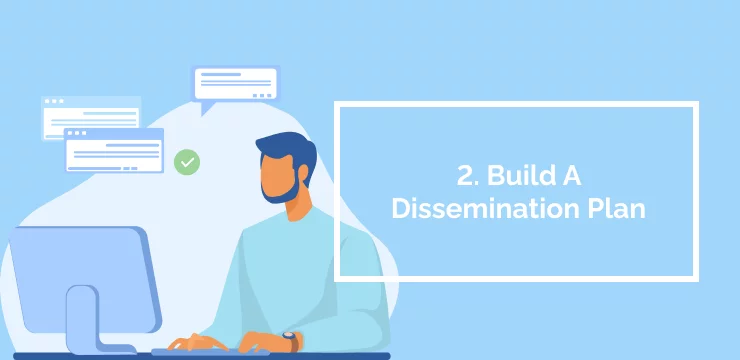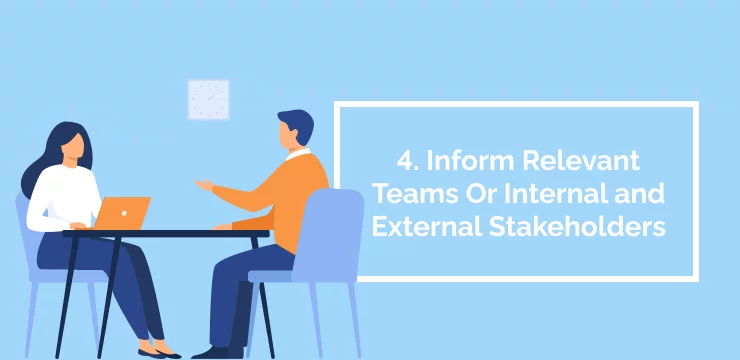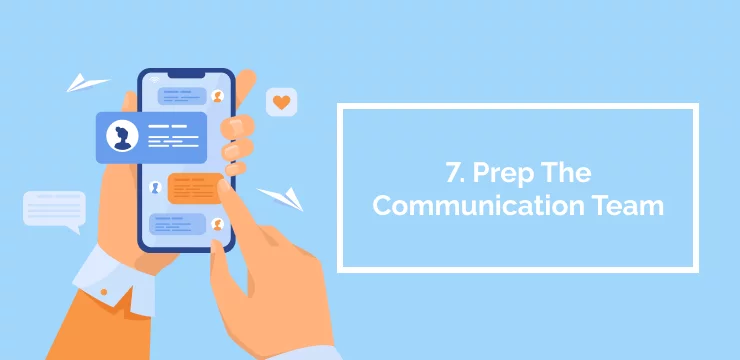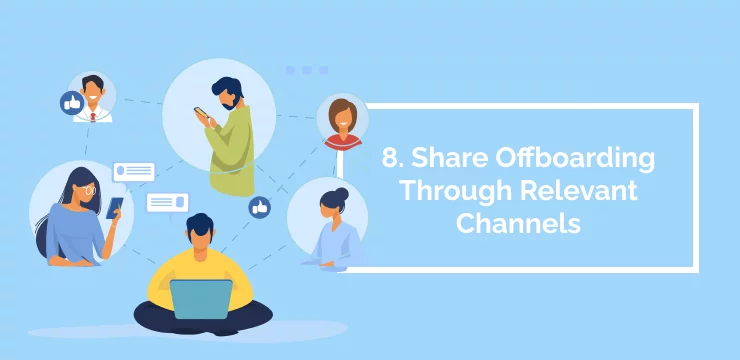
Everyone wants to feel valued at work. Companies intend all their employees to be productive but also feel part of a family, and employees want flexibility and the satisfaction of achieving their responsibilities in a nurturing environment.
These needs are why an employee’s experiences when entering and exiting their job frame the experience overall. Employees build memories based on what they think the company did for them, how the company felt about their input, and the perception of the employee’s position within the company from both sides.
How do departing employees feel as they leave your company? Are they valued and satisfied, or frustrated and disappointed? Does this fit with how you want them to feel? And now for the most critical question. What can you do to ensure your intention fits the reality of the offboarding experience for all your employees as they leave their job via termination, retirement, or resignation?
Offboarding is crucial to understanding why departing employees leave a company. Planning this process using the offboarding communication plan template below allows former and current staff members to have a pleasant and informative experience during offboarding and learn from it. So what exactly is the offboarding process?
What Is The Employee Offboarding Process?

Offboarding happens when a company separates from an employee. Your company needs offboarding so it can be perceived positively by employees and the public, maximize resources, and for the potential return of the employee to the same or a different role. When a team completes offboarding correctly, it can be a long process and a drain on staff resources, but it is all necessary.
Offboarding also can improve employee retention; as current staff sees outgoing staff treated as they leave, they are reminded they work for a caring company. This makes offboarding an essential, though often ignored, part of employee experience management (EEM).
Would you ever go back to a restaurant if you rushed out the door and the staff gave you a curt farewell? Now consider how you would feel differently if the owner said goodbye to you warmly by your first name and gave you a little extra item to take home with you, leaving you feeling valued. It’s the same thing for employees as they go.
What Does The Process Include?
With 19 million US workers quitting their job since April 2021, it is time to ask why this is and formulate a plan to ask these questions in the best way. This is where the four main steps of the employee offboarding checklist come in. When your company misses one stage, its absence becomes detrimental to the former employee and your company’s resources and future learning. In business, as in public life, saying goodbye is as important as saying hello.
Steps of an offboarding plan
- Transfer the responsibilities of the former employee to a new employee.
- Remove access rights and passwords.
- Return company equipment.
- Perform exit interviews to collect feedback.
Offboarding should be a tightly contained and complete process where the relationship between the employee and the company ends with smiles. Conversely, it is awkward and can become costly when a former employee returns a company laptop or a car to a former organization several weeks after completing a contract. As the offboarding team meets these steps, the company sees increased efficiency and a positive experience for both parties, maximizing the benefits and the best use of resources.
The Importance Of Establishing Offboarding Communication

“Employees who leave sometimes encounter impatient or rude managers; they may even be treated like traitors. This lack of attention to the exit process is a mistake.” Harvard Business Review
Communication is the key to the steps above being completed successfully by the management team. The way the offboarding team conducts the final dialogues with departing staff depends on the mutual respect between employees and the company established before the employee exits. Communication during an employee’s contract is key to how they feel when leaving, so this must be of high quality throughout the experience and can lead to reduced employee turnover.
Employees will likely carry out offboarding expectations following meaningful dialogue between staff and the organization. However, suppose communication has been established poorly throughout their time at an enterprise. In that case, it will remain poor by the time offboarding takes place and trying to contact them to return company equipment or other issues will be time and cost-intensive. However, following our eight-step offboarding communication plan helps ensure everything is tied up neatly during the exit process.
The Ultimate Eight-Step Offboarding Communication Plan

Employee offboarding involves communication with several people in the right ways for different reasons. On paper, the offboarding process seems simple, so why do so many steps need to take place? The answer is easy to see once staff follows the eight process stages, as the effort of the offboarding process pays dividends.
Former employees will more likely recommend your business to others or return a few months later with renewed enthusiasm after seeing what the market offers. Offboarding shows exiting employees that your company provides that little extra when it comes to staff.
1. Consider Who Needs To Know

HR is primarily responsible for the offboarding process. However, many other teams are involved. For offboarding to be successful, all relevant departments must be informed, involving good communication for smooth cross-departmental operations.
The HR department
- Begin offboarding process
- Ensure offboarding goes smoothly
- Update the staff roster
The IT team
- Recovering company assets
- Changing passwords, removing access rights
- Avoid security breaches
- Close each secure account
Other teams include:
The finance team
- Process the final paycheck
Recruitment team
- Recruit or promote a replacement
Leadership team
- Must be involved for transparency
Simple arrangements like a small cake, work lunch, and a card can make a lasting memory that can influence the decision to return in the future. Cross-departmental processes allow all of these actions to take place promptly. The softer sides of offboarding involve ensuring that the organization treats departing employees positively, leaving staff members to feel valued. Next, HR creates a dissemination plan.
2. Build A Dissemination Plan

The offboarding team extracting data from the process is the most significant benefit to a company of effective offboarding. Business intelligence departments are usually responsible for processing the raw data after the HR department has passed it on. Next, the internal PR team disseminates the information to all departments.
Gossip travels faster than wildfire. So it’s essential that the HR department makes everyone aware of an employee’s departure as soon as possible and correctly. The most significant risk with the offboarding process is that it can lead to negative perceptions of a company, internally or externally. HR teams have experience in communication with individuals and groups in line with company policy. By doing this, HR protects the company’s image and makes departing employees want to return.
HR make sure that the message is clear and positive. Who is leaving, why are they leaving, and why is their departure positive for them and the company? The HR team conveys these messages through well-presented data to reduce gossip and maintain the company image, promoting trust and transparency.
3. Determine Whom Will Share The Plan

HR is usually the best choice to share the plan, but depending on the company, this is not always the case. HR must decide who will share the findings company-wide when the business intelligence department has constructed the plan. PR departments are often suitable for this task. However, the leadership team may also wish to decide who shares a dissemination plan in liaison with department managers or may choose to share it themselves.
The crucial factor is that the person or team sharing the plan promotes trust and transparency to allay any mystery or risk of gossip that may circulate. It is also helpful for a widespread and trusted manager to share the plan to promote and take ownership of these values.
4. Inform Relevant Teams Or Internal and External Stakeholders

Which teams and stakeholders must be informed of the departing employee leaving the company, inside or outside the company? Communication is critical here, as it involves delicate relationships crucial for business. The PR or HR department should be well versed in such liaisons to ensure the company is perceived positively.
5. Engage In A Feedback Loop To Determine The Next Steps

Feedback loops help maintain systems at the best level. Feedback loops within the offboarding process help leaders and managers understand why an outgoing employee left a company. Feedback loops can have a positive or negative outcome.
A simple feedback loop has three stages: input, system, and output. When positive feedback is the outcome, it feeds from production into the system, making a closed loop that does not need more research. However, when the outgoing employee gives feedback on the outcome of an offboarding meeting, the circle continues between systems in a constant loop. This outcome is because the reason for the negative feedback is unknown, or what could have been done by the company to avoid it. This process is an excellent opportunity for always learning to receive positive feedback as part of the feedback loop.
Part of the negative perceptions of a company can be because of poorly managed PR, in general, and as part of the employee offboarding process. Developing an effective internal PR strategy is what we will look at next.
6. Develop An Internal PR Strategy

There are seven steps to improving your internal PR strategy. These are simple to follow and involve metrics and other measurements to use factual data to ensure a company can easily see an improvement.
Assess current strategy
You must map out your current systems and processes to improve what you have. Set out what you want to achieve with your internal PR strategy, how recently you updated it, and establish metrics for success. These actions allow you to build on your existing strategy and easily record progress since implemented improvements.
There are 6 questions to ask:
- What is your current level of performance?
- How do you achieve performance improvement?
- What do you want to achieve?
- How can you accomplish this?
- How long will this take?
- Who’s involved?
Answering these questions gives a good set of data to work from to improve the current strategy. Questions also provide the PR team structure to enhance processes and clear outcomes as you see that you achieved what you needed or failed and need to return to the drawing board and review your approach.
Set goals and timelines
Creating goals and timelines is fundamental to any plan to improve a system or set of processes, and a PR strategy is no exception. Goals create a clear vision to work towards, and timelines ensure there is little to no waste during the improvement process.
Define core success metrics
When every aspect of a business is measurable, it is easy for people to see what is going well and what is not. The team can then use these data to improve processes, such as employee culture or individual empowerment of employees.
Within the employee offboarding process, success is more difficult to measure via metrics, as the offboarding team cannot measure people’s experiences with numbers. However, through deep, meaningful dialogues with staff, the offboarding team can extract details of an employee’s reasons for leaving. Executives can then discuss these experiences alongside numerical metrics to plan how to reduce employee departures.
The PR team can note how often employees share company-related social media content and internal communications on the intranet. These are effective ways of using readily available data to assess the success of internal PR.
Segment and map audience
Even within internal communications, the target audience is integral to success in achieving desired aims. Different messages pitched in various ways appeal to staff depending on their department. Staff can get overwhelmed when they are given too much information by PR if it is irrelevant to them. Ensuring the right information is given to the correct department is crucial to internal PR engagement.
Develop a process of approval
The first step involves deciding who will take responsibility for internal PR. Next, consider who is best from each department to contribute to the content. Marketing teams often choose this, as they are the most forward with communicating brand image. An approval process helps the internal PR team avoid sending the wrong, sensitive, or confidential data to all departments.
Define tools for internal communication
Certain channels are better choices for specific communications. Sometimes it’s better to email, but you need a more immediate response for other scenarios. The most popular chat service today is Slack. This program integrates many different software types to give a seamless, smooth experience. However, GoogleChat and Microsoft Teams are free alternatives with similar functionality but without some of the more premium features.
Today the business landscape is essentially hybrid, and staff communicates better when equipped with the best technology. The hybrid workforce status is an even more urgent reason to consider the best communication channels for staff.
Assess progress and step up output
Internal PR teams can use Key Performance Indicators (KPI) far beyond progress tracking as ongoing optimization for internal comms. Review and re-assess whether you are getting the most out of your internal comms every three months or more frequently, and look at ways to improve.
Internal PR strategy is at the heart of every company strategy, bringing everyone together for the same vision. Hence, it needs attention and review to maintain and increase its efficiency at every opportunity. Internal PR can also become a part of promoting shared values. Announce changes visibly as a result of employee feedback, making the process of improving comms processes democratic and encouraging dialogue between departments and the PR team.
7. Prep The Communication Team

Communication teams must be ready to get the most out of communications with staff. Teams must also know the information about the subcultures of different departments and how these biases affect attitudes toward various topics. Senior staff such as CIOs, CEOs, and managers can give this information to communication teams in special meetings.
8. Share Offboarding Through Relevant Channels

Offboarding works best when responsibilities are shared through cross-departmental processes, increasing learning and efficiency of resources. The head of offboarding coordinates cross-departmental work and has an open mind when transmitting information between departments. When senior staff achieves this, a culture of sharing communication responsibilities and tasks and maintaining the company image.
3 Tips to Ensure The Return Of Company Equipment
Companies in the tech industry often loan staff equipment to complete their job responsibilities. Loss of this equipment to staff theft, intentional or unintentional, can cost up to $50 billion in the US alone. There are a few ways to counter this:
- A culture of honesty and integrity encourages returns.
- Amnesty policy, so outgoing staff are not penalized.
- Tracking devices placed on the equipment.
At all costs, company assets should be returned by outgoing staff promptly to avoid unnecessary administrative time and costs of requesting the return of the property, as well as the apparent money lost of the cost of the assets. More than anything else, all staff conducting the offboarding need to be aware of the processes needed to have equipment returned. This act reduces equipment lost to theft.
How Can The Offboarding Process Be Optimised?

However rigorous and robust an employee offboarding checklist is, staff must frequently optimize it for changing times and respond to learning throughout the offboarding process. These three critical steps ensure you get the best out of your company’s offboarding process optimization.
Offboarding process tips
- Make a schedule and stick to it.
- Ensure the same person or team carries it out.
- Practice a flexible approach to learning.
It can be easy to have an ‘if it ain’t broke, don’t fix it’ approach toward offboarding optimization, but staff must make schedules and keep them as a priority. And when the team carries out optimization, it is helpful if the team carries their learning from one optimization to the next, so the same person or team should carry this out whenever possible.
Lastly, responding to uncomfortable feedback from a departing employee and changing a culture can be difficult. But with a flexible approach and priority for progress, the team can make positive changes to get the most out of offboarding optimization.
The Offboarding Process Flow Chart

Structure and intention are the fundamental principles when constructing or choosing an offboarding process flow chart. Most offboarding flow charts are simple and involve three steps.
Step 1: On Receiving/ Giving Notice
The notice period can be two weeks to 2 months.
Complete paperwork
- Resignation letter
- Severance package
- Non-Disclosure Agreement
- Benefits agreement
- Taxation
- Roll-over pay
- Document responsibilities
Step 2: Face-to-Face Offboarding checklist
Ensure the return of company assets
- Laptop
- Pass card
- Parking passes
- Passwords
Exit interview
- Actively listen
- Make it a positive experience for all.
- Investigate employee feedback
Step 3: Following Departure
- Remove employees from the system.
- Have their office cleaned
- Begin temporary offboarding covers process if needed
- Introduce the new employee to the team
When offboarding staff follows these steps, and they are all carried out as planned, companies can use this offboarding process flowchart as a process mapping checklist tool to check off tasks as staff complete them. The exit interview is where the process can become more challenging, as staff may become emotional due to a termination of their contract.
If staff become upset, an experienced and supportive team member must be present. But following the steps above should structure the experience of leaving a company, making the transition process seamless and positive.
Offboarding Best Practises
There are times when offboarding can feel easy and neat, and others when it feels protracted and messy. Following best practices can guide you toward the best experience for you and your former employee.
Complete an offboarding checklist
- The checklist gives structure and routine.
- Complete a comprehensive checklist in advance to give time for planning.
Conduct a smart exit survey
- Due to remote working, interviews are out, and surveys are in.
- Accessible design, thoughtful questions.
Restrict access
- Restrict access, and reduce security breaches.
- Act quickly to maximize security.
Lock former employees out quickly
- Auto-lock out for former employees.
- Cloud software can automate this.
- Document any unauthorized access
Make it positive
- Ethics and respect drive your approach.
- The brand needs to be seen positively by the end of the process.
- Keep communication open
- The exit interview is the best time to ensure positive outcomes.
When the relevant team carries out these best practices, the offboarding outcomes are much more likely to be positive because of the structured processes involved. The other benefits to this are the learning and increased security of your business.
Saying Goodbye Is As Important As Saying Hello
The offboarding team must follow a structured process of their devising or a template as part of the employee offboarding checklist. This action creates a positive experience for the company and outgoing employees, leaving everyone with a smile.
Sometimes, it can be challenging to ensure that all parties are happy. In other situations, it’s easy to ensure everyone is pleased by the end of an offboarding. Whatever the case, favorable outcomes, and, a structured template lead to the most learning for the former employee and the company.
From application to exit interviews, employees’ perception of a company is as important, if not more important, than customer perceptions. Companies invest in their staff to provide the best service for customers, but without meaningful experiences for staff, they will leave without looking back. Offboarding proves that saying goodbye is as important as saying hello, with employee onboarding and offboarding both essential to ensuring loyal, hardworking staff through the best employee experience possible. When an employee leaves a job with a positive memory, everyone benefits.
WalkMe Team
WalkMe spearheaded the Digital Adoption Platform (DAP) for associations to use the maximum capacity of their advanced resources. Utilizing man-made consciousness, AI, and context-oriented direction, WalkMe adds a powerful UI layer to raise the computerized proficiency, everything being equal.



